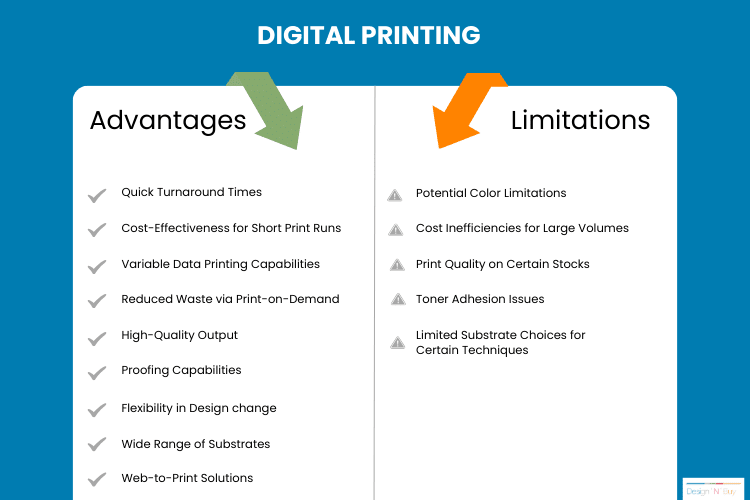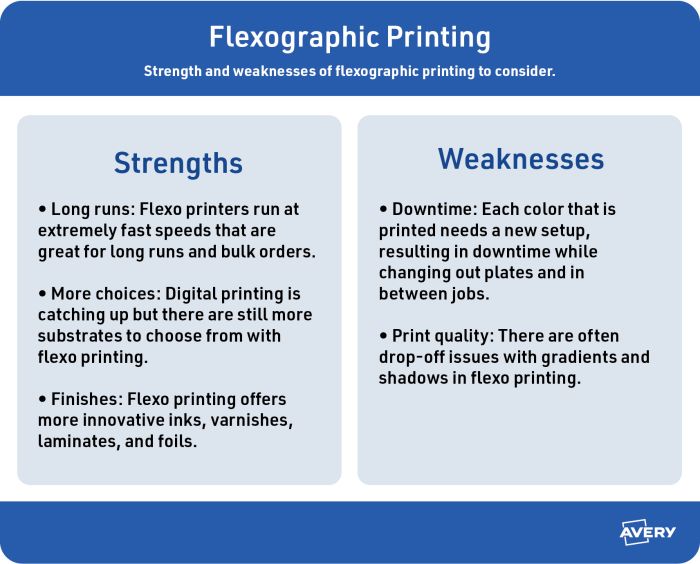What Does Digital Printing Mean?
What Does Digital Printing Mean?
Blog Article
Digital Printing - Questions
Table of ContentsThe 10-Second Trick For Digital PrintingRumored Buzz on Digital PrintingDigital Printing Can Be Fun For EveryoneDigital Printing Can Be Fun For EveryoneThe smart Trick of Digital Printing That Nobody is Talking AboutAbout Digital PrintingThe Buzz on Digital Printing
According to PMMI, electronic printing allows brand names and manufacturers to react promptly to client needs while boosting the supply chain, decreasing warehousing price and waste, and taking pleasure in faster time to market. That all audios terrific, however how does this technology do all that? The major differentiator of these innovations is that there are no set-up fees and no plates with digital printing.This results in quicker turn-around time and reduces expense when making use of electronic printing.

Getting My Digital Printing To Work
With traditional printing methods, short-run printing is just not feasible. Since a terrific design can make or break your item, electronic printing continually creates premium, clear and colorful graphics each time.
Digital printing is the process of printing digital-based pictures straight onto a selection of media substrates. There is no demand for a printing plate, unlike with countered printing. Digital data such as PDFs or desktop computer posting files can be sent out directly to the digital printing machine to print on paper, picture paper, canvas, material, synthetics, cardstock and other substrates.
Digital printing is quicker and with the ability of even more information, two reasons it's frequently utilized to print product packaging, direct advertising flyers, and books or publications. Most digital printing machine have actually traditionally used toner-based modern technology and as that innovation quickly developed, the print quality rivalled that of offset presses. In recent years, inkjet innovation has actually streamlined digital print ease of access as well as the cost, speed and quality challenges facing print suppliers today.
Unknown Facts About Digital Printing
Offset printing is the ideal solution when you require and/or versatile colour, paper and sizing alternatives. Digital Printing. Digital printing is optimal for tasks, generally much less than 2,000 duplicates, and when you need a quick turn-around. If you are not sure what's ideal for your project, we will work with you to choose the print method best matched to your task and budget.
Digital printing permits for quick and cost-efficient production without jeopardizing top quality, unlike balanced out printing. Digital printing, with its impressive color precision and uniformity, is a game-changer in the industry.
While both have their qualities, there are several essential differences that establish them apart. Comprehending these differences can aid you make an enlightened choice concerning which technique is best suited for your printing requires. Countered printing has long been the best option for high-volume commercial printing. It involves moving ink from plates to rubber coverings before lastly using it onto the paper.
6 Easy Facts About Digital Printing Described
One notable benefit of countered printing machine is their capacity to deal with a wide variety of paper sizes and densities. The offset press can accommodate numerous products, including shiny or distinctive papers, supplying convenience that digital printers might battle to match. This printing technique relies on the use of printing plates to move the ink onto the paper, making it a preferred choice for high-grade prints.
Modifications might be essential throughout the print run to maintain top quality uniformity with printing presses. Digital printing, on the other hand, uses a more streamlined technique contrasted to balance out press.

Allow's explore these advantages and discover exactly how they can benefit companies. One significant benefit of electronic printing is the elimination of expensive arrangement fees that are connected with balanced out printing. In standard balanced out printing, each job needs the development of plates, which can be costly and lengthy. With electronic innovation, there is no demand for plates or intricate configuration procedures.
10 Simple Techniques For Digital Printing
An additional cost-saving element of electronic printing is the capability to publish just what you require. Unlike offset printing, where huge quantities need to be generated to make the procedure financially feasible, digital printers use better versatility. Whether you need a small batch or a solitary copy, electronic technology enables on-demand printing without any extra prices.
Using standard offset printing would require producing a large quantity upfront to achieve an appropriate device cost per flyer. By deciding for electronic printing instead, they can print just the precise number needed at a lower total cost.: An advertising company desires to run a direct mail project targeting different customer segments with tailored pamphlets.
Among the vital advantages of electronic printing for small print runs is its. Unlike offset printing, which calls for the production of plates and arrangement time for each and every task, electronic printers can begin producing prints nearly immediately. This makes them perfect for smaller quantities where time is important.
A Biased View of Digital Printing
An additional benefit of electronic printing is its capacity to produce tailored advertising and marketing materials. With, services can easily integrate personalized material within each published piece. This enables for targeted messaging that resonates with different segments of their target market. A business running a direct mail campaign can personalize each postcard or pamphlet based on recipient preferences or demographics.

Among the key advantages is the boosted flexibility and customization choices that include digital printing. With electronic printing, making adjustments to styles or material during the production process is a wind. Unlike traditional balanced out printing, where making alterations can be lengthy and expensive, digital technology enables fast and easy adjustments.
An additional advantage of electronic printing is its variable information capacities. This function allows for individualized material to be published on a mass range without giving up effectiveness or top quality. Whether you require to personalize each piece with specific names, addresses, or other one-of-a-kind details, variable data printing makes it possible. This level of customization can considerably enhance consumer interaction and reaction rates.
The Best Guide To Digital Printing
Whether you're looking for glossy or matte coatings, textured papers, or specialized supplies, digital printers can accommodate different preferences. Digital printing genuinely radiates.
Report this page